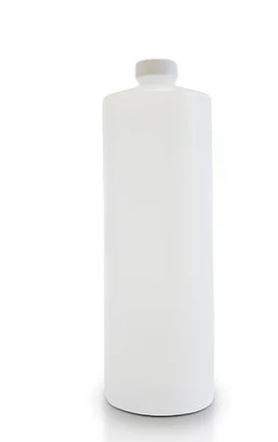Understanding the Results: What Your Lead Water Test Kit is Telling You
Testing your water for lead is crucial for ensuring the safety of your household. Once you’ve conducted the test, understanding the results is the next important step. This guide will help you interpret what your lead water test kit is telling you and provide actionable steps based on the findings.
Contents
Reading Your Lead Water Test Results
When you use a lead water test kit, it will usually show results in parts per billion (ppb). This measurement tells you how many parts of lead are present in a billion parts of water. For example, a result of 15 ppb means there are 15 parts of lead in a billion parts of water. Interpreting these numbers accurately is crucial for making informed decisions about your water quality.
What the Numbers Mean
The Environmental Protection Agency (EPA) sets the action level for lead in drinking water at 15 ppb. Here’s a simple breakdown of what your test results could mean:
- 0 to 15 ppb: Your water is within safe limits according to the EPA. While no level of lead is considered completely safe, levels below 15 ppb are not expected to pose significant health risks. However, even at these low levels, it is beneficial to minimize exposure as much as possible, especially for vulnerable populations such as children and pregnant women.
- Above 15 ppb: This indicates a lead level above the EPA action level. Immediate steps are necessary to reduce lead exposure. Prolonged consumption of water with lead levels above 15 ppb can cause serious health issues, including developmental problems in children and cardiovascular issues in adults.
Immediate Actions if Lead is Present
If your test results show lead levels above 15 ppb, consider these actions:
- Stop Using Tap Water for Drinking and Cooking: Use bottled water or a lead-certified filter until you address the issue. This precaution ensures you and your family are not ingesting contaminated water.
- Identify the Source: Lead can enter water through corroded pipes, solder, or fixtures. Identifying and replacing these sources is crucial. Common sources include old lead pipes, brass fixtures, and certain types of solder used in plumbing.
- Flush Your Pipes: Run cold water for several minutes before using it for drinking or cooking. This can help reduce lead levels. Flushing is especially effective if lead contamination is due to lead solder or brass fixtures.
Long-Term Solutions
For a more permanent solution, consider these steps:
- Replace Lead Pipes and Fixtures: Hire a professional to inspect and replace lead-containing plumbing. Lead pipes and fixtures can continuously leach lead into your water, so replacing them is the most effective long-term solution.
- Install a Water Filtration System: Certified filters can effectively reduce lead levels in your water. Look for filters that are certified to remove lead, such as those with NSF/ANSI Standard 53 certification.
- Regular Testing: Continue to test your water periodically to ensure it remains safe. Even after taking remedial actions, regular testing ensures that lead levels do not rise again.
Understanding False Positives and Negatives
While lead test kits are generally reliable, they can occasionally produce false results. Here’s what to keep in mind:
- False Positives: If your test shows lead when there isn’t any, it could be due to contamination of the test kit or sample. Always follow the kit instructions carefully. Ensure that you use clean containers and avoid touching the inside of the bottle or cap.
- False Negatives: If your test shows no lead but there is some, it could be because the sample wasn’t taken correctly or the lead concentration is unevenly distributed in your plumbing. This can happen if water sits in lead pipes for an extended period, leading to higher lead levels in the first draw of water.
When to Seek Professional Help
If your results are above 15 ppb, or if you’re unsure about the accuracy of your test, consider professional testing. Professionals use more sophisticated equipment and can provide more precise results. They can also conduct a more thorough investigation to identify the source of lead contamination and recommend appropriate remediation steps.
Health Risks of Lead in Drinking Water
Understanding the health risks associated with lead exposure underscores the importance of addressing any detected lead in your water. Lead is a toxic metal that can cause a variety of health problems, especially in children. It can affect almost every organ and system in your body. Here are some specific risks:
- In Children: Lead exposure can lead to developmental delays, learning difficulties, irritability, weight loss, sluggishness, abdominal pain, vomiting, constipation, and hearing loss. High levels of lead can cause seizures, coma, and even death.
- In Adults: Lead exposure can result in high blood pressure, joint and muscle pain, difficulties with memory or concentration, headache, abdominal pain, mood disorders, reduced sperm count, and miscarriage or premature birth in pregnant women.
Steps for Safe Water Use
While addressing lead contamination, ensure you use water safely:
- Use Cold Water for Cooking and Drinking: Hot water is more likely to leach lead from pipes.
- Clean Faucet Aerators: These can collect lead particles. Cleaning them regularly can reduce lead exposure.
- Run Water Before Use: If water has been sitting in the pipes for several hours, running the tap for a few minutes can flush out lead-contaminated water.
Conclusion
Understanding the results of your lead water test kit is straightforward with the right knowledge. If your results indicate the presence of lead, take immediate steps to protect your health. Regular testing and proper maintenance of your plumbing system are key to ensuring safe drinking water for you and your family.
Remember, lead in drinking water is a serious issue, but with the right actions, it is manageable. Always prioritize safety and seek professional advice if needed. Addressing lead contamination promptly can safeguard your health and provide peace of mind.




